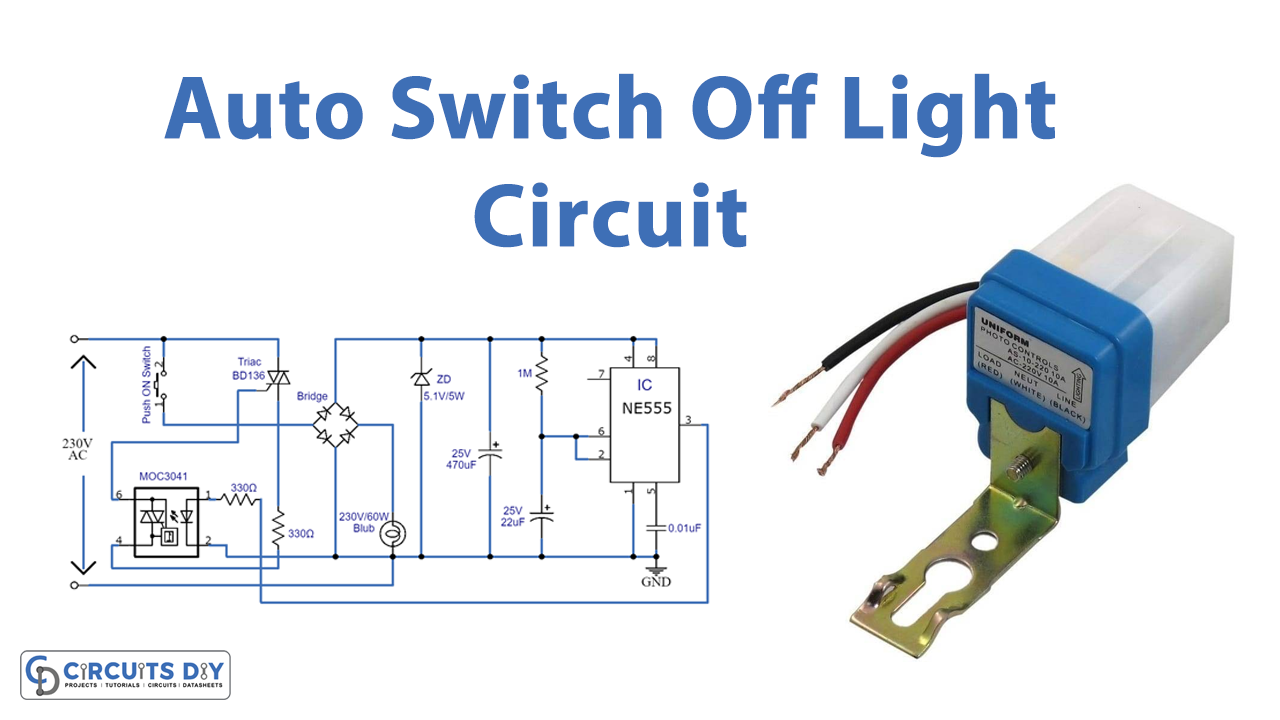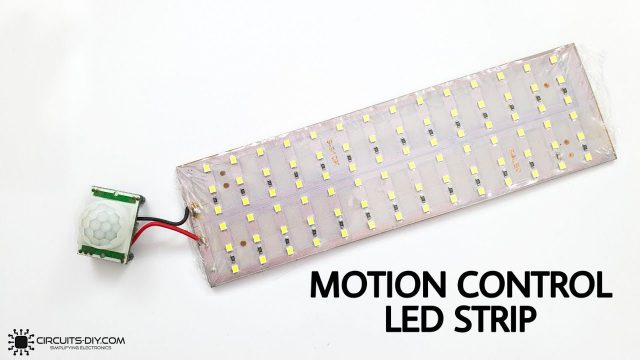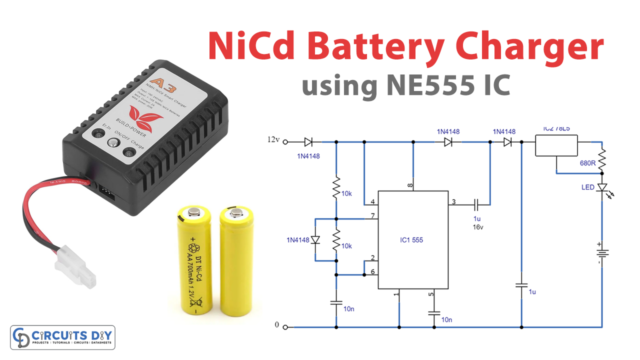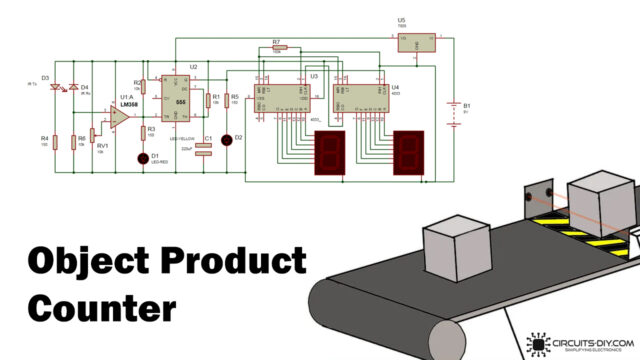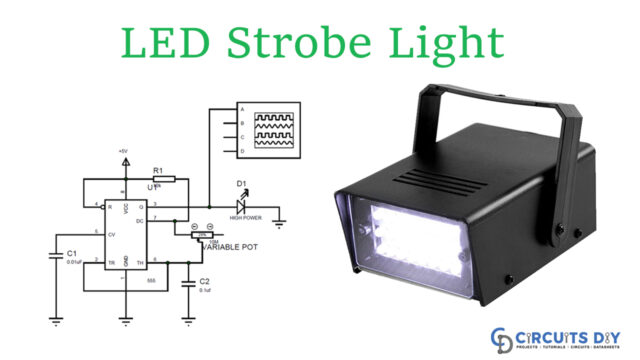Introduction
Lights that switch on and off automatically serve several purposes, including convenience. The automatic off-switching circuit can be created in a variety of methods, but it can be a little difficult to make it simple. A timer IC, a regulator, a TRIAC, as well as a few components, are needed to create a general Auto Switch off light circuit.
The Auto Switch Off Light Circuit operates an AC lamp for a short period before shutting it off. It may be utilized in staircases or other places where a brief period of lighting is required.
Hardware Required
| S.no | Component | Value | Qty |
|---|---|---|---|
| 1. | IC | NE555 timer | 1 |
| 2. | Diode | 1N4007 | 1 |
| 3. | TRIAC | BT106 | 1 |
| 4. | Bulb | 60W | 1 |
| 5. | MOC | 3041 | 1 |
| 6. | Zener Diode | 5.1v | 1 |
| 7. | Push Switch | – | 1 |
| 8. | Electrolysis Capacitor | 470uf, 22uF | 1,1 |
| 9. | Ceramic Capacitor | 0.01uf | 1 |
| 10. | Resistor | 330Ω, 1MΩ | 1,1,1 |
Circuit Diagram
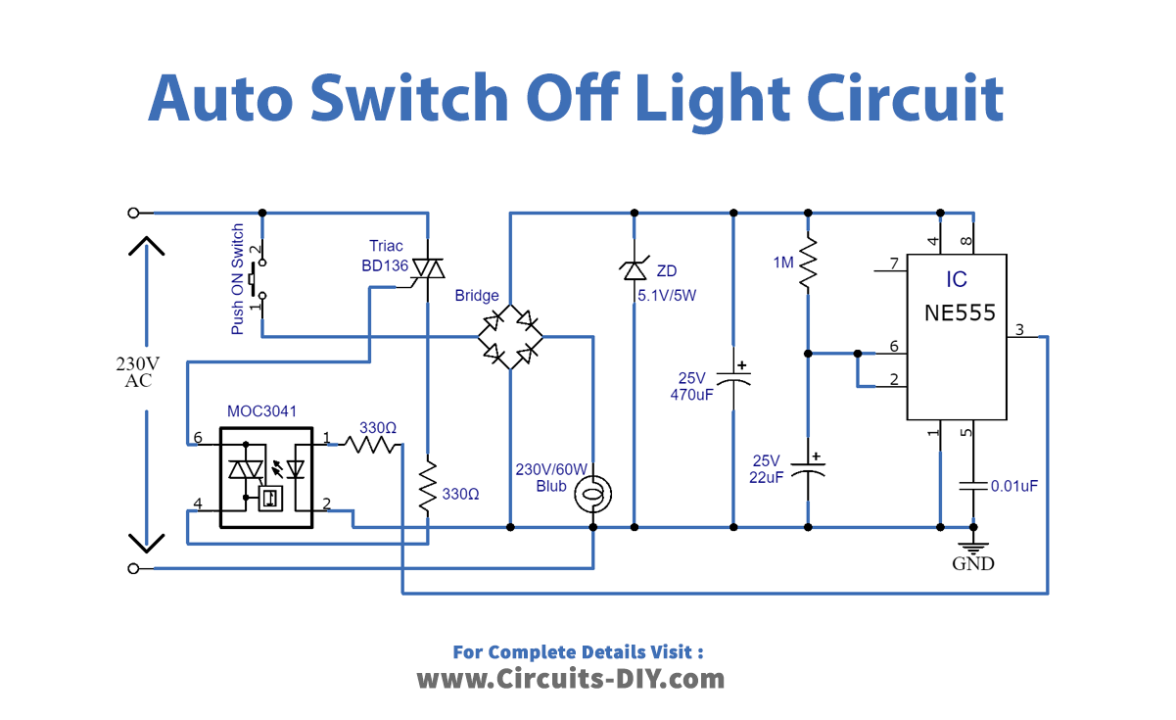
Working Explanation
The 230-volt, 60-watt bulb is connected to the main power supply in this circuit via a 1 Amp bridge rectifier and TRIAC component. Optocoupler MOC3041 is connected to the TRIAC’s gate terminal. The output of IC555 is used to control this optocoupler. Here, the timing pulse that the timer IC 555 produces is dependent on the components of the timing resistor R3 and capacitor C2.
When we push to turn ON the switch, the timer IC receives power and the load is connected to the main power source, producing a timing pulse. This will drive the optocoupler and disconnect the load from the power source through TRIAC in a few seconds.
Application and Uses
- Automation systems
- AC lights and lamps
- For the automatic lighting system


